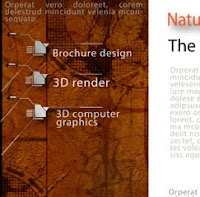CHEZ RENE SOCCA
It’s easy to get sucked into a tourist trap in an international vacation destination like Nice, France and during the summer months it is especially hard to find a decent restaurant – that time of year the prices are higher, the food lousier and the service, well, sometimes non-existent.
However, even in the peak of the summer season, there is one special place in the middle of the Old Town (“Le Vieux Nice”) that is consistent, delicious and cheap to boot! It’s a place we return to time and time again, all year round, never tiring of their typically niçois fare: Chez René Socca.
René Socca, as its name indicates, specializes in Socca - a delicious, giant chick-pea crepe of sorts that is baked to perfection in wood burning stoves, served piping hot with salt and pepper, wrapped in paper and eaten with your fingers (watch out - it's hot!) and washed down preferably with ice cold rosé wine (if you’re old enough, of course). Satisfying and nutritious, it is a great little snack that you find only in Nice.
 |
| Pan full of Socca, fresh out of the oven. |
 |
| Socca. |
Of course, René Socca serves other spécialités niçoises such as “beignets de fleurs de courgettes” (fried zucchini flowers), “farcis” (stuffed vegetables), “pissaladiere” (caramelized onion pizza), and “tourte de blettes” (Swiss chard tart, served sweet or savory), just to name a few.
 |
| Beignets de fleurs de courgettes. |
 |
| Acras. |
 |
| Counter service at Rene Socca. |
What’s great about this place is it’s open all day long, you stand in line at the counter, order your food and sit down at the little wooden tables outside and eat. Drinks are served at your table from the bar across the street. What could be simpler? It’s been there for as long as I can remember (that’s a long time) and it’s cheap! A serving of socca is about 2 euros and an ample snack for two on its own, but you won’t be able to resist all the other goods – much too tempting! Bon Appétit!
 |
| Jean-Marc queuing up for socca! |
 |
| Order's up! |
 | ||
| Juliette patiently waiting for the first bite... |
CHEZ RENE SOCCA
2 rue Miralhéti
06300 NICE
(33) 04.93.92.05.73
































